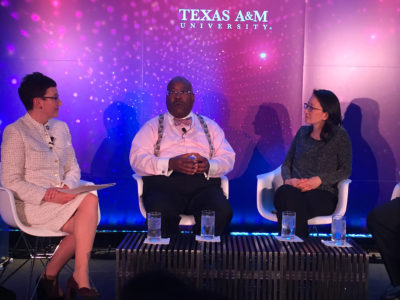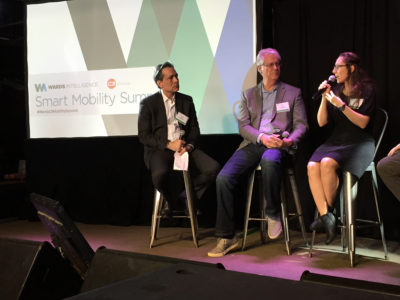
Texas A&M Transportation Institute (TTI) experts joined thought leaders from around the world recently during the annual South By Southwest Festival in Austin.
Agency Director Greg Winfree joined healthcare leaders for a focus on “Plugging into rural healthcare solutions” as part of the Texas A&M Power House presence at SXSW on March 12. Winfree focused on transportation’s role in facilitating healthcare access for rural communities, pointing out that many rural areas face public transportation gaps that impede health care access, and that the ability for a person to seek medical services often depends entirely on personal vehicle ownership. For those remote areas, Winfree said, a comprehensive community needs assessment is essential.
He also emphasized the importance of bringing emerging transportation technologies to locales far beyond urban areas. Transportation network companies (Uber, Lyft, etc.) are experimenting with drone-like vehicles for people that can operate in the air space below 500 feet. “It’s conceivable that those vehicles could be applied to medical transport needs,” he said. “And we need to do what we can to make automated vehicle technology available and affordable in rural areas.”
Winfree also addressed rural roadway connectivity, shifting workforce needs, and maintaining radio frequency access to support telemedicine applications.

Associate Research Scientist Ipek Sener was featured on a March 9 panel entitled “How robo-taxis will revolutionize urban transport” at the Smart Mobility Summit hosted by Wards Intelligence and the C3 Group.
Sener addressed the need to emphasize public understanding of AV technology, noting that many people assume that the term automation equates with Level 5 technology, not understanding that automation is available in multiple degrees. “At TTI,” she told the audience, “it’s important to us that we transfer accurate information to the public to avoid misunderstanding.”
She also stressed the need for balance with all aspects of advancing AV technology, including infrastructure, safety, and public policy. “The future looks really bright if we can do this the right way,” she said.